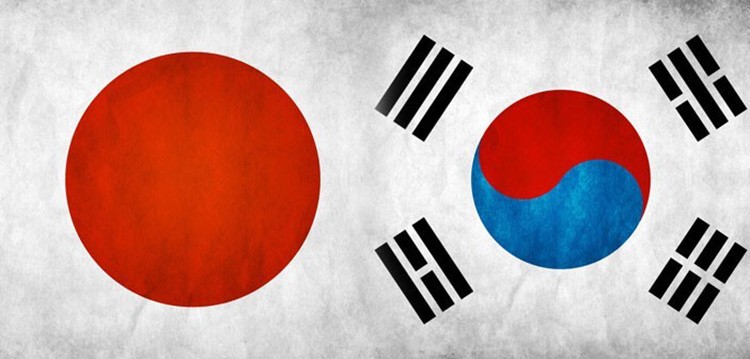Karate and Taekwondo are two of the most well-known martial arts from the Far East. Karate is a form of Japanese martial art that was developed from fighting methods from Okinawa, Japan. On the other hand, taekwondo is a Korean martial art and combat sport.
Taekwondo is also an Olympic sport having been recognized as a medal sport in 2000 during the Sydney Games. On the other hand, karate is not considered an Olympic event.
Aside from those very basic differences, taekwondo and karate have a lot of differences. Here are some of the more noticeable differences between karate and taekwondo:
Features
Karate is more of a striking art with a lot of punches, kicks, knee and elbow strikes, and open handed techniques. Grappling, parries, throws, and locks are also taught with equal emphasis.
Loosely translated from Japanese, karate means ‘empty hands’. It actually originated as a form of self-defense which put emphasis on effectively using the unarmed body of a practitioner through blocking or thwarting an attack, and counter-attacking through kicks, punches, and strikes.
On the other hand, taekwondo relies mostly on kicking techniques. The theory behind this approach is that the leg is the part of the body that has the strongest power, and a kick has the greatest potential to perform strikes without successful retaliation.
Promotion/Belt
In karate, ranking would depend on the practitioner’s technical competence and character development. Teaching and dedication are equally important at higher levels. Ranking is used to measure a practitioner’s progress and give him or her feedback as well as incentives in training.
In karate, there are two levels of belts—pre-black belt and black belt. The pre-black belt levels are white belt, orange, yellow, blue, green, purple, high purple, third brown, second brown, and first brown belt.
For a practitioner to achieve a higher rank, he or she would have to go through an examination administered by a panel of judges who look in to the movements, mental discipline, and techniques of the practitioners.
Reaching black belt is considered a new beginning. There are various black belt levels as well, from first degree black belt to tenth degree black belt.
In taekwondo, the ranks are separated into senior, junior, or student and instructor variations. The juniors have belts of different colors, while students begin with the tenth geup and work their way towards the first geup.
Students are to go through promotion tests to advance to the next rank. In these promotion tests, practitioners have to show their proficiency in the different aspects of taekwondo before a panel of judges.
Tests often include breaking of boards, sparring and self defense, demonstration of the use of taekwondo techniques with both power and control, among others. Practitioners are also to answer questions on terminologies, concepts, and history of taekwondo to prove their knowledge and understanding of the martial art.
Seniors have to go through nine ranks that are indicated by the Korean term ‘dan.’ Black belts start at the first dan, and would have to go through the second, third, fourth, and so on. The ninth and final dan is given only to the true master of the art as designated by the International Taekwondo Federation.
History
Both martial arts trace their origins to thousands of years ago. Karate was said to have started more than 2,000 years ago when the Indian Buddhist monk Bodidharma went to a small forest temple to teach Zen Buddhism. Bodidharma introduced an organized set of exercises that were designed to promote a sound mind and body, and which started the Shaolin style of temple boxing.
Zen Buddhism would become the foundation for the Chinese martial arts. Eventually, the upper class family members in the small Japanese island of Okinawa traveled to China to study the various martial arts disciplines. They would later amalgamated Chinese martial arts to what would become karate.
Taekwondo is also said to be more than two thousand years old. It originated in Korea sometime in 37 B.C. It was based on the principle that every individual as the natural instinct to defend himself against a sudden attack.
The Korean martial arts would eventually fade into obscurity, particularly during the Joseon Dynasty. When the Japanese forced their way to conquer Korea at the turn of the 20th century, the practice of taekwondo was banned. The Japanese wanted the Koreans to learn their culture, including their martial arts. But taekwondo remained popular among Koreans, at least to those who taught the martial art through underground teaching and folk custom.
When the country was liberated from Japanese colonization, new martial art styles suddenly came out of nowhere and became widely practiced. After the Korean war, martial arts schools in the country began to operate. President Syngman Rhee then instructed that all these martial arts schools unify under a single system. Taekwondo was organized as a martial art and combat sport in 1955 and has then become a discipline practiced by more than 180 million people around the globe.

In this writing TKD promotional examination includes board breaking, sparring, and self defense. Is karate do not have breaking, sparring and self defense practice also? I think that when it comes to these consideration Karate is hard because in sparring alone, most karate dojos let spar their students without any head gear, body armor, shin guard and gloves; and the face can be punch and kick. Its up to the karatekas to control their strikes so that they will not injure seriously their sparring mate. In this sparring it already simulate one on one self defense.